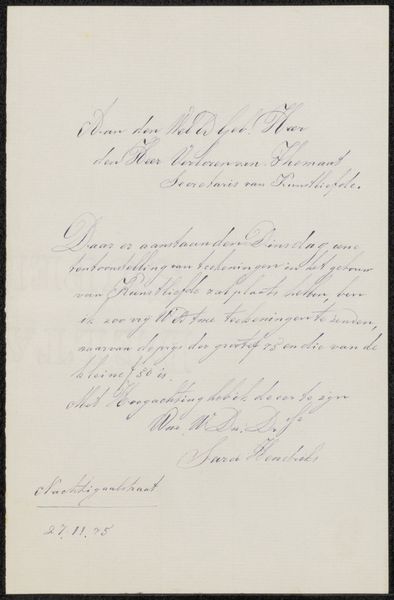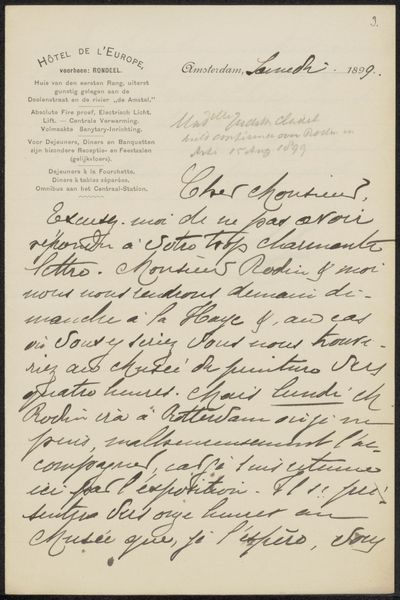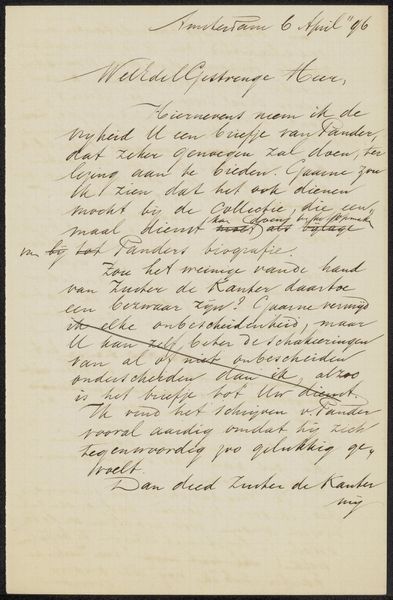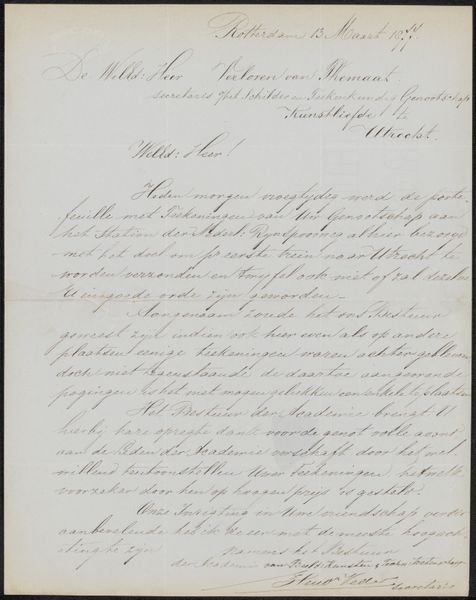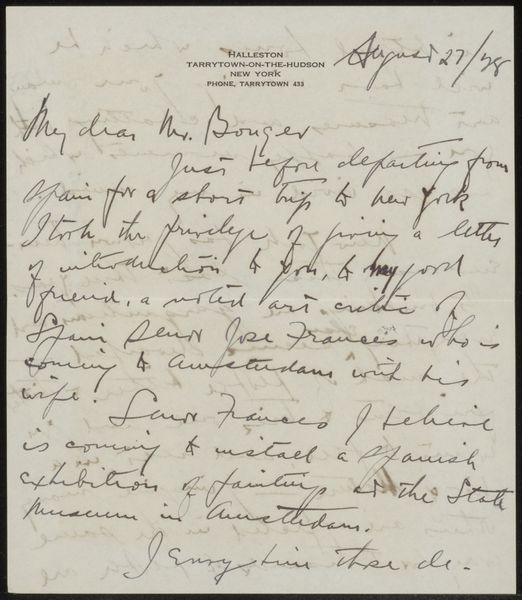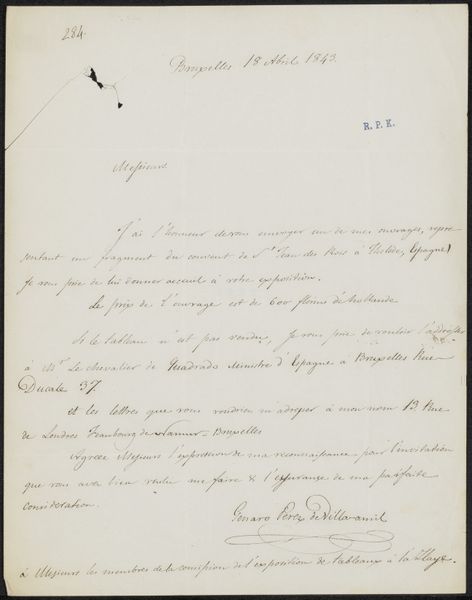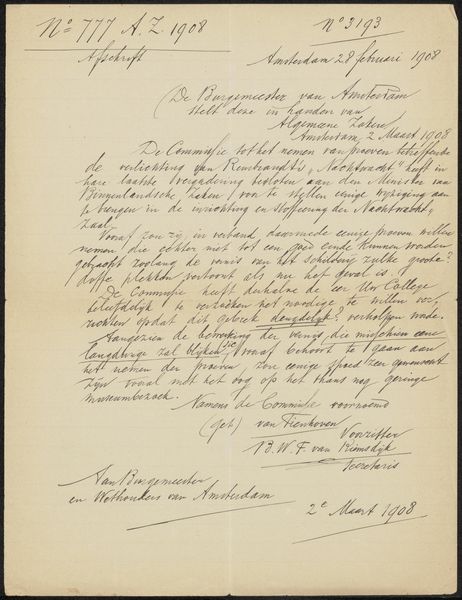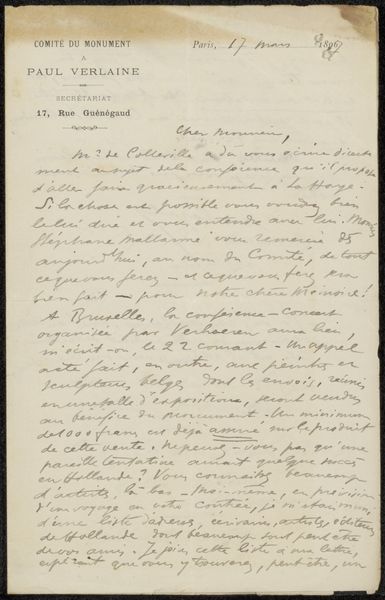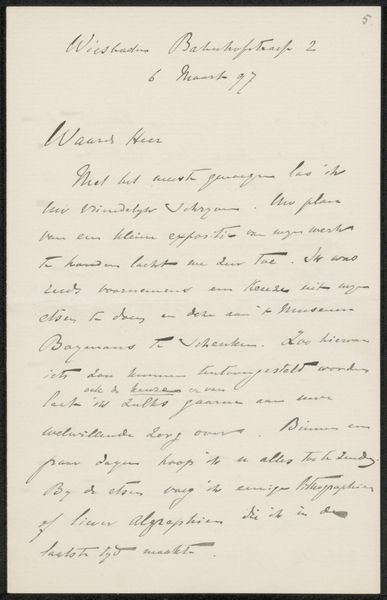
paper, photography, ink, pen
#
hand written
#
ink paper printed
#
hand drawn type
#
paper
#
photography
#
ink
#
hand-written
#
hand-drawn typeface
#
pen work
#
pen
#
calligraphy
Copyright: Rijks Museum: Open Domain
Editor: Here we have "Brief aan Philip Zilcken," possibly from 1886, crafted with pen and ink on paper, featuring a photograph. Looking at this piece, I'm struck by the contrast between the formal letterhead and the intimate, flowing script. How do you interpret this work? Curator: I see it as a compelling example of material culture, really. The paper itself, likely a mass-produced product from a specific mill, signifies a particular social status and availability of resources. The ink, too – was it standard issue, or a bespoke blend? Understanding the means of production reveals insights into Gonse’s world. Editor: That’s interesting. I was focused on the aesthetic choices – the calligraphy, the layout. Curator: But those choices were, in part, *dictated* by the available tools and materials, don’t you think? Consider the pen nib, for example. Its width and flexibility directly influenced the style of handwriting, the thickness of each stroke. Furthermore, what can you discern about the relationship of hand-craft and technology here? Editor: Well, the letterhead is clearly printed, which indicates industrial printing processes at the time. However, the message is handwritten...So we have industrial printing meeting handicraft letter-writing... It seems this reflects a tension between the two. Curator: Precisely. And that tension, that interaction between mass-produced elements and individual craftsmanship, is central to understanding the piece's value as a cultural artifact and reflecting the shift in artistic expression towards industry. We might even think about the labor involved in writing – the time and skill required compared to the efficiency of printing, yes? Editor: So, by examining the materials and production methods, we can move beyond just appreciating the letter’s aesthetic qualities and instead see it as a document reflecting broader social and economic shifts? Curator: Exactly! It forces us to consider the processes of making, consuming and its place within society. Editor: I hadn't considered it that way before, but now I see the letter as less about individual artistry and more about the context in which it was made. Curator: Indeed, it helps us challenge traditional notions of artistry altogether.
Comments
No comments
Be the first to comment and join the conversation on the ultimate creative platform.
